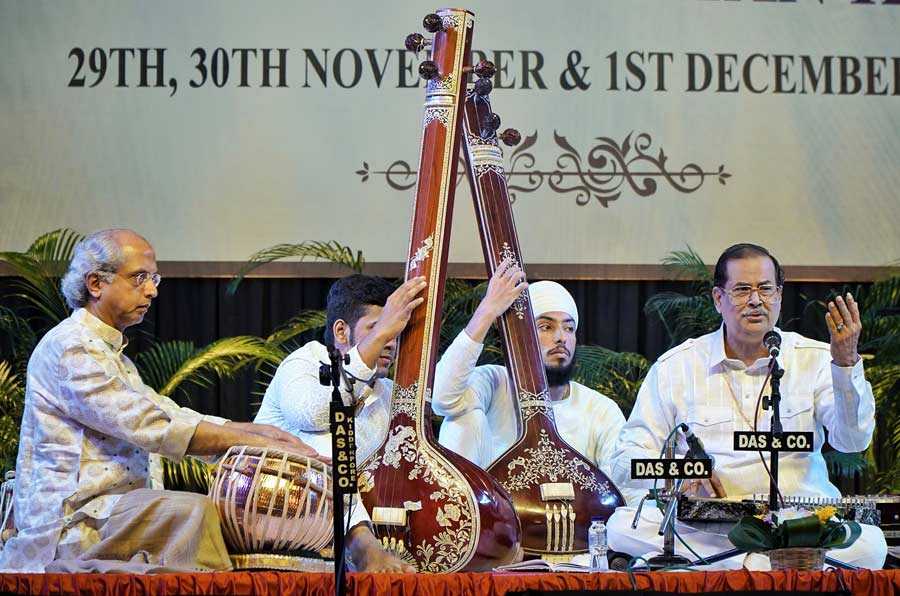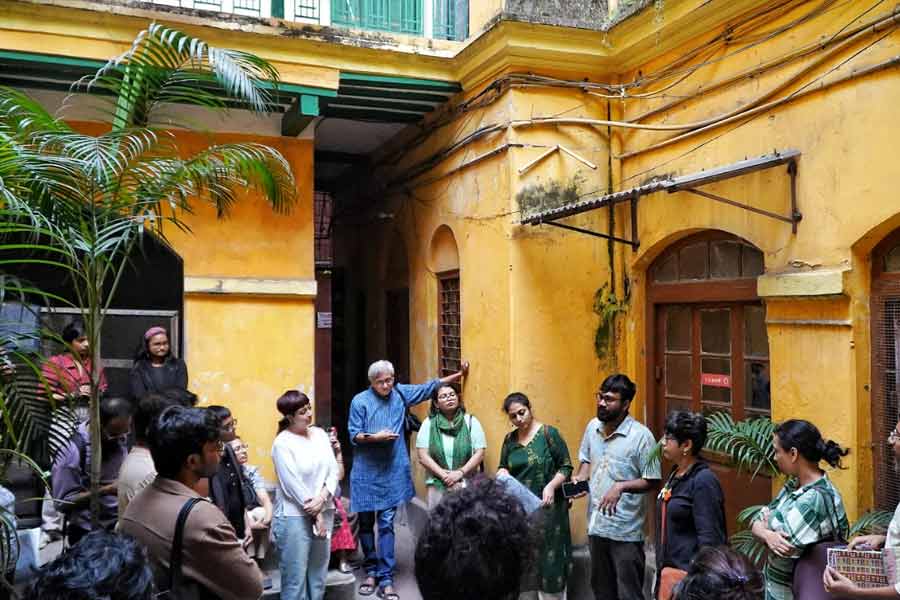What would be a ‘perfect’ Sunday? Some soulful thumri music, coupled with an enchanting kathak performance, telling profound mythological stories at the stunning Khelat Ghosh mansion in Pathuriaghata would be pretty hard to match.
DAG made this concept possible with Mehfil-E-Thumri, the epic finale to their annual festival, The City as a Museum, which concluded on November 24. My Kolkata takes you through the evening.
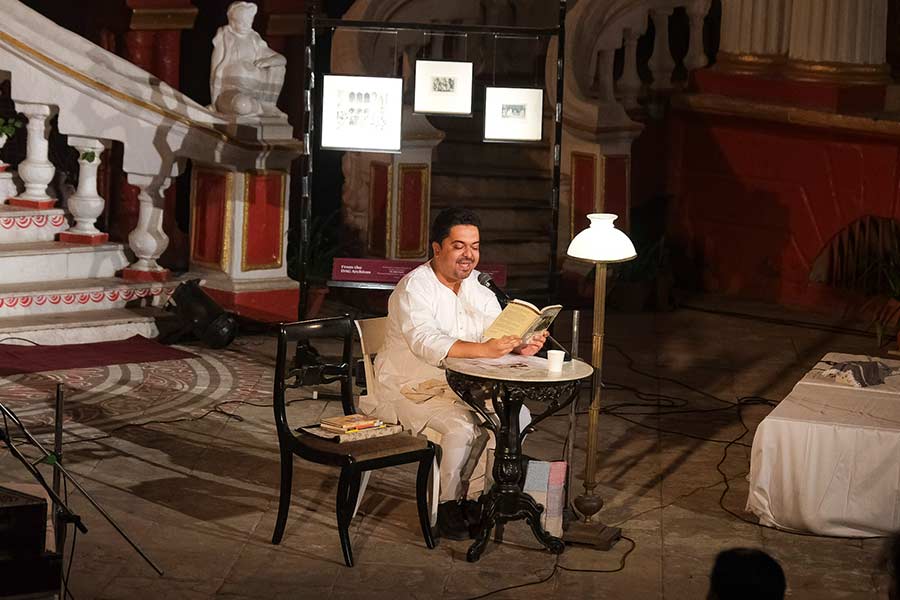
Music enthusiast and academic scholar Shantanu Majee hosted a listening session, introducing audiences to performers like Gauhar Jaan, Indubala Devi and Begum Akhtar
The event began with a session by music enthusiast and assistant professor at Techno India University’s department of English, Shantanu Majee. He examined the origins and dimensions of thumri in classical music, juxtaposed with the stories of baijis and tawaifs. A pertinent fact that Majee pointed out, was how the term ‘classical music’ traditionally referred to forms practiced by male musicians, while women were largely equated with ‘semi’ or ‘light’ classical.
The first song of the night was Aangan Mein Mat So by Rasoolan Bai, followed by Gauhar Jaan’s Aise Sawan Ke Mahinawa Mein Gudale Gudna. “Gauhar Jaan was one of the first recorded musicians in India, and the prima donna of the Indian Gramophone Industry. She championed the three-minute song,” Majee added.
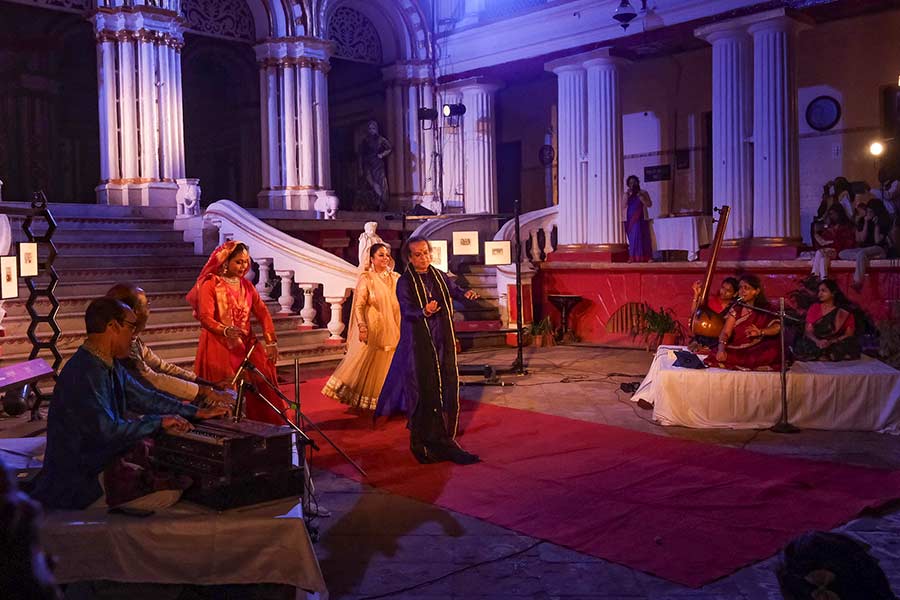
‘It is truly a pleasure to perform at such a hallowed venue. I am collaborating with Parimal da on the tabla for the first time,’ said vocalist Sanjana Roy Chakraborty
“Everyone has listened to the next track in some context or format, immortalised by cinema,” Majee said, before playing Mohe Panghat Par by Indubala Devi. He also shed light on Indubala’s life in Kolkata’s Rambagan neighbourhood, and her efforts towards the welfare of sex workers in the area. “Indubala Devi trained under none other than Gauhar Jaan, and treasured great musical knowledge,” Majee added.
Majee also highlighted how the lack of patronage in north Indian centres drew female musicians to Kolkata and Bombay (Mumbai) for their proximity to colonial powers. These women held control over the kotha, which not only served as a venue for sexual gratification but also became alternative centres of musical knowledge. The nautch thus emerged as a popular entertainment form for Indian merchants hosting English guests.
Majee drew special attention to local art by playing the Bengali thumri, Shyam Tumi Baka Baka Tomar Mon, by Angurbala Devi. The session concluded with Begum Akhtar’s powerful voice, as she crooned the notes of Shyam Na Ab Tak Aaye. “Song texts are often unsatiated meta data files for us. While it is difficult to look for effect and desire, settings like this evening infuse them with the energy of the bygone era,” Majee said.
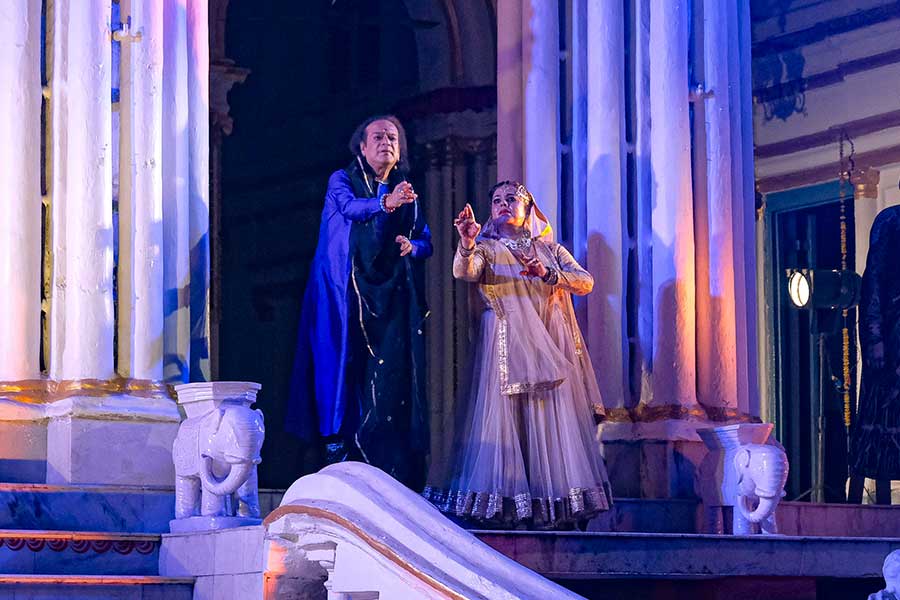
‘The costumes in kathak are of extreme importance, with gold and silver zari work signifying opulence,’ said veteran kathak performer Ashimbandhu Bhattacharya
The listening session was followed by a mesmerising concert by vocalist Sanjana Roy Chakraborty, accompanied by Parimal Chakrabarty on the tabla and Pradip Palit on the harmonium. The performance became even more special as Ashimbandhu Bhattacharya and his students complemented the music with a kathak performance. “Kathak has a long tradition that emerged from temple courtyards, where performers would narrate mythological stories through dance, leading to spiritual ecstasy. This dance form evolved significantly during the Mughal period, absorbing elements of both Hindu and Muslim cultures,” said Bhattacharya.
The artistes performed integral thumris from Indian mythology, including Ab Ke Sawan Ghar Aaja, Mora Saiyan Bulave Aadhi Raat and Jiya Na Lage Mora.
“After 10 days of travelling across the length and breadth of the city, it was wonderful to see so many people join us for the final event to celebrate our city and our shared artistic legacy through new perspectives. We look forward to another edition next year,” signed off Sumona Chakravarty, vice-president of museums at DAG.

